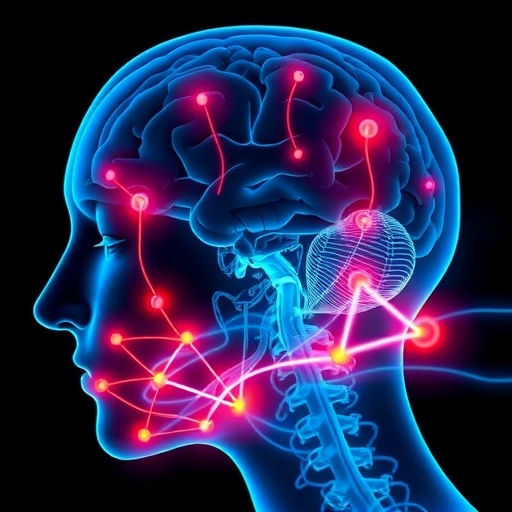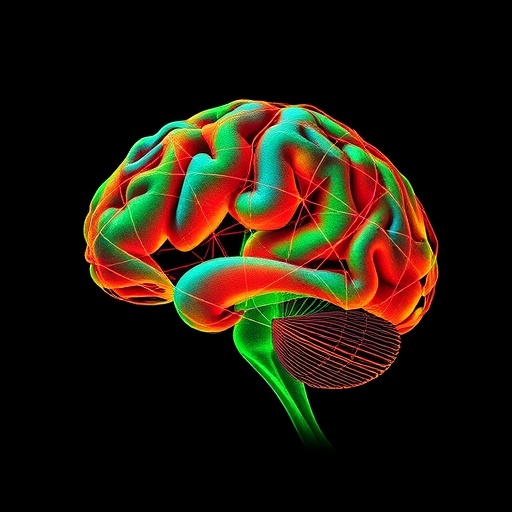
In a groundbreaking study that challenges long-held beliefs about the adaptability of the human brain, researchers have uncovered compelling evidence indicating that the brain’s cortical map associated with a lost limb remains remarkably stable even years after amputation. Published in the prestigious journal Nature Neuroscience, this research overturns the widely accepted dogma that the brain undergoes substantial cortical reorganization following the loss of a body part—a concept that has dominated neuroscience textbooks for decades.
The international team, consisting of scientists from the National Institutes of Health (NIH) and University College London, leveraged a unique and rare experimental paradigm by conducting functional MRI (fMRI) scans on individuals scheduled for arm amputation surgery due to medical necessity. This study design provided an unprecedented opportunity to examine neural activity patterns linked to specific fingers before the limb was lost and to track how these cortical representations evolved over an extended post-amputation period—spanning up to five years.
Historically, neuroscientists have posited that the brain is highly plastic, capable of rapidly reallocating cortical “real estate” after sensory input changes, such as those caused by amputation. This concept, known as cortical remapping, theorizes that regions of the brain previously dedicated to the lost limb become overtaken by adjacent functional areas, such as those controlling facial or foot movements. Such remapping has been proposed not only as a hallmark of plasticity but also as a potential explanation for phantom limb syndrome, a perplexing condition in which amputees experience sensations, often painful, seemingly emanating from their missing limb.
.adsslot_1NjLFSyBrv{width:728px !important;height:90px !important;}
@media(max-width:1199px){ .adsslot_1NjLFSyBrv{width:468px !important;height:60px !important;}
}
@media(max-width:767px){ .adsslot_1NjLFSyBrv{width:320px !important;height:50px !important;}
}
ADVERTISEMENT
However, this new study calls into question the universality of cortical remapping after limb loss. Researchers meticulously scanned three participants prior to their scheduled amputations, capturing detailed functional maps of fingertip activity by applying tactile stimulation and requesting finger movements. Subsequent scans were performed multiple times over the ensuing years, as participants attempted to “move” their phantom hand. Astonishingly, the functional maps generated post-amputation closely mirrored the original pre-surgery maps, demonstrating a surprising degree of cortical stability in the motor and sensory representations of the lost limb.
The stability of these cortical representations was not only visible to human analysts but was further confirmed through advanced machine learning tools. Algorithms trained on pre-amputation brain data reliably decoded which specific phantom finger was being moved post-amputation, underscoring that the brain retains a granular and highly detailed representation of the hand even in the absence of peripheral inputs. This fidelity goes against the notion that the brain’s organization drastically reshapes after limb loss.
Moreover, the study found no evidence suggesting that regions associated with other body parts, such as the lips or feet, encroached into the cortical territory of the missing limb. This finding negates the prevailing hypothesis that neighboring areas expand their cortical dominance into zones vacated by an amputated appendage. Control comparisons using neuroimaging data from able-bodied individuals further bolstered the conclusion that cortical maps remain largely unperturbed by the dramatic event of amputation.
The findings hold profound implications not only for our understanding of brain plasticity but also for clinical approaches to conditions like phantom limb pain. Many existing therapeutic strategies assume that cortical remapping is a fundamental driver of phantom sensations and aim to reverse or mitigate this presumed reorganization. The current evidence advocates for a paradigm shift, suggesting that treatments should instead consider the persistence of the original limb representation within the brain and target mechanisms that sustain phantom experiences without relying on the plasticity model.
Beyond clinical repercussions, this research opens exhilarating avenues for the burgeoning field of brain-computer interfaces (BCIs) and neuroprosthetics. If the brain retains a stable, high-resolution map of the missing hand, then future neurotechnology can exploit these enduring representations to enable more naturalistic control of prosthetic limbs. According to lead graduate researcher Hunter Schone, the implication is that next-generation BCIs can aim to decode increasingly refined aspects of hand movement and sensory feedback—such as differentiating between finger tip and finger base or restoring sensations of texture, shape, and temperature—ushering in a new era of intuitive and immersive prosthetic function.
Co-author Chris Baker emphasizes the rarity and rigor of this longitudinal experiment, which required identifying and tracking patients over many years, a feat not commonly attainable in neuroscience research. The thorough, multimodal analyses—complementing human neuroimaging with artificial intelligence methods and cross-study comparisons—strengthen confidence that the study’s conclusions are robust and reflective of genuine neurobiological phenomena.
By demonstrating that the brain does not undergo the dramatic rewiring once assumed after limb loss, this study invites neuroscientists to rethink fundamental models of brain plasticity and sensory representation. It also highlights the brain’s remarkable capacity to preserve the “body schema” in the absence of physical input, an insight that resonates with anecdotal reports of phantom limb experiences.
This research, supported by the NIH, eloquently illustrates that the brain’s body map serves as an enduring framework, awaiting reconnection and functional restoration through innovative technology. As we stand on the precipice of advanced neuroprosthetic development, the insight that cortical maps remain stable not only clarifies the neural basis of phantom limbs but also sets a hopeful trajectory toward restoring movement and sensation with unprecedented fidelity.
Future studies will undoubtedly aim to expand upon these findings by involving larger participant cohorts and investigating cortical stability in other types of limb loss or sensory deprivation scenarios. Additionally, exploring the cellular and molecular mechanisms that sustain these persistent representations may reveal novel targets for therapeutic intervention and enhancement of neuroprosthetic interfaces.
In essence, the conventional view of the brain as an infinitely malleable organ in the context of limb loss faces a formidable challenge. Instead, the brain is now seen as a steadfast guardian of bodily identity, maintaining an internal map that endures beyond physical absence and highlighting new possibilities for healing and technological reintegration.
Subject of Research: Brain plasticity and cortical representation stability after limb amputation
Article Title: ‘Stable cortical body maps before and after arm amputation’
News Publication Date: 21-Aug-2025
Web References: https://www.nature.com/articles/s41593-025-02037-7
References: Schone, H., Baker, C., et al. (2025). Stable cortical body maps before and after arm amputation. Nature Neuroscience. DOI: 10.1038/s41593-025-02037-7
Keywords: Brain plasticity, cortical remapping, amputation, phantom limb syndrome, neuroprosthetics, brain-computer interface, functional MRI, neuroscience, cortical stability
Tags: brain cortical map stabilitybrain plasticity and adaptabilitycortical reorganization after amputationfunctional MRI in amputeesgroundbreaking neuroscience studiesimplications for pain management in amputeeslong-term effects of limb lossneural activity patterns post-amputationneuroscience of limb amputationNIH and University College London research collaborationphantom limb phenomenaunderstanding brain function and sensory input changes





